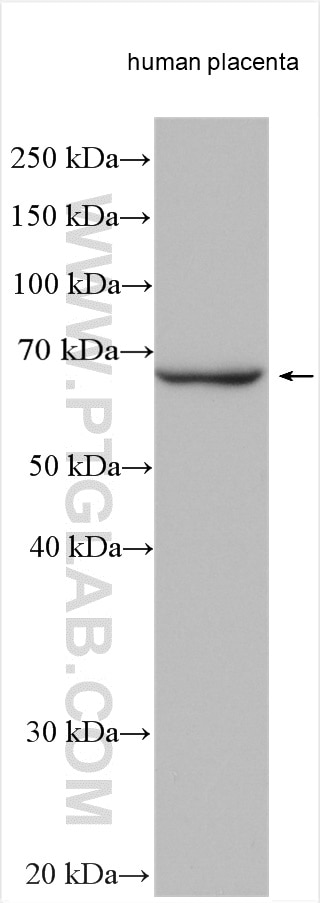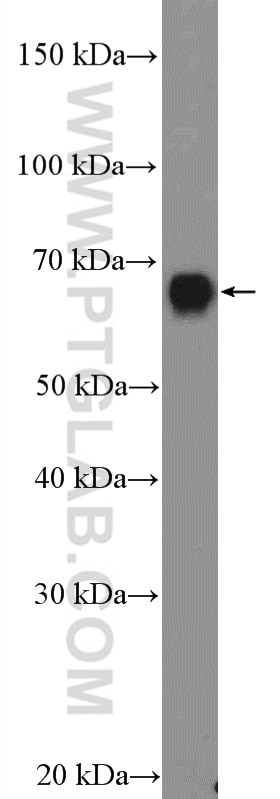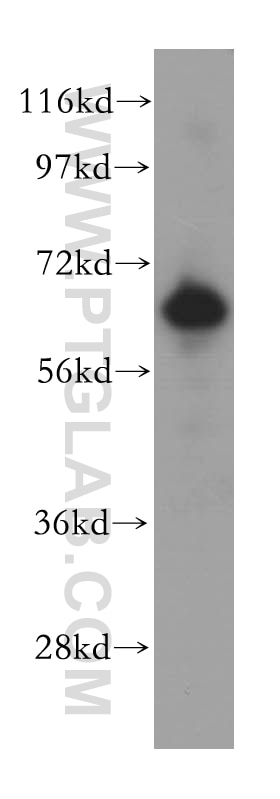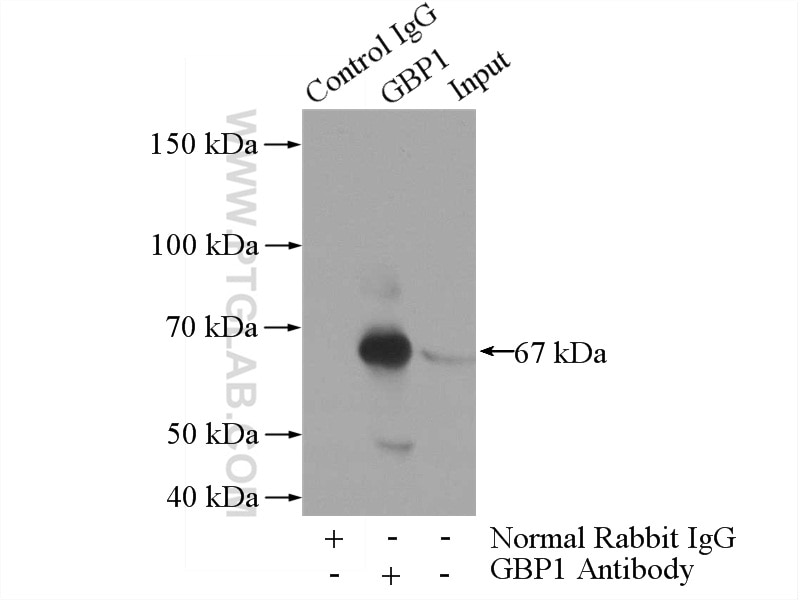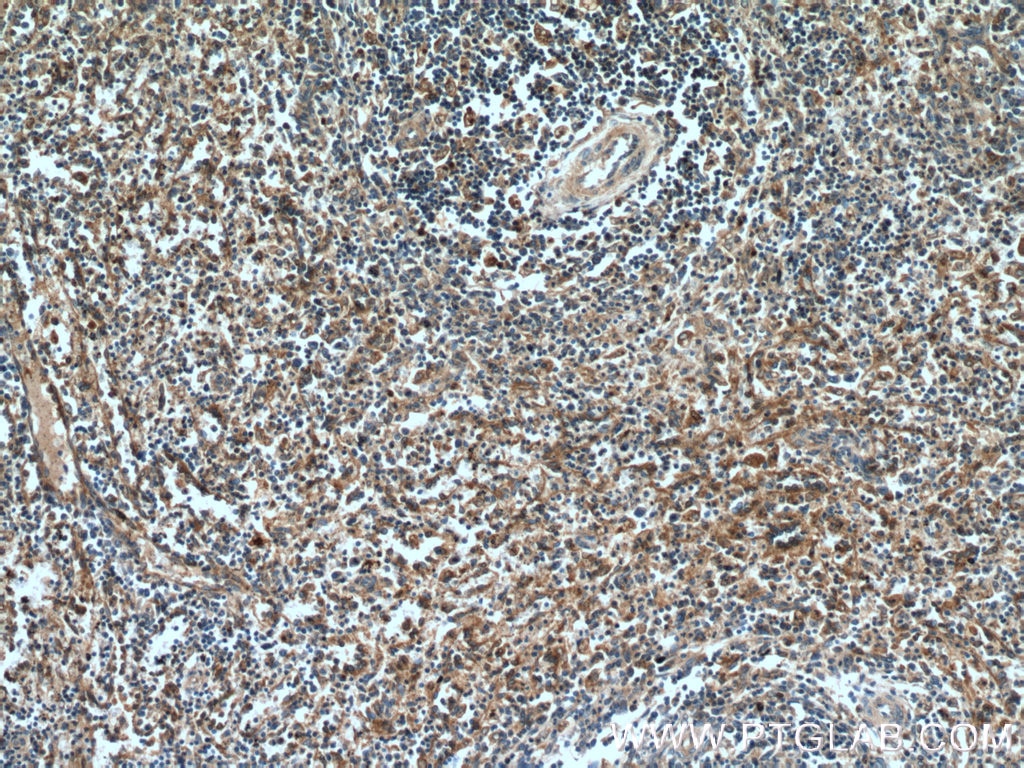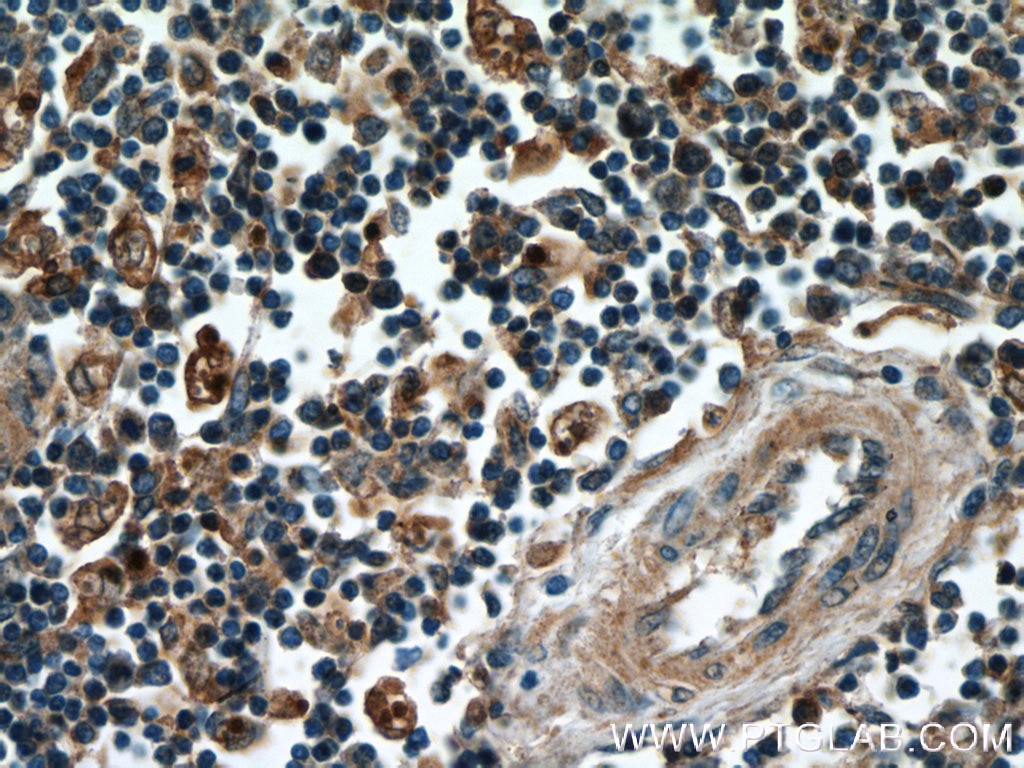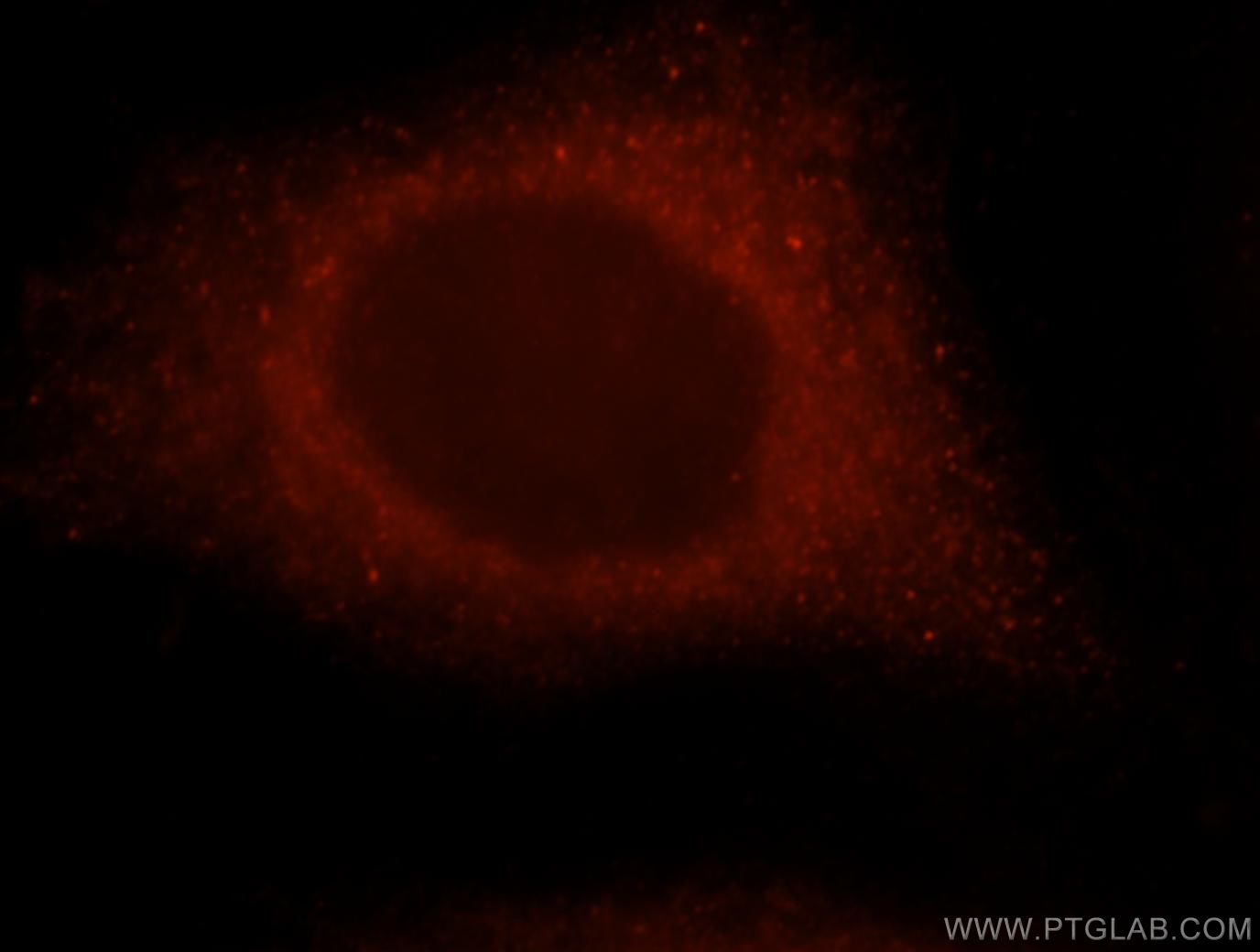- Featured Product
- KD/KO Validated
GBP1 Polyklonaler Antikörper
GBP1 Polyklonal Antikörper für WB, IHC, IF/ICC, IP, ELISA
Wirt / Isotyp
Kaninchen / IgG
Getestete Reaktivität
human und mehr (3)
Anwendung
WB, IHC, IF/ICC, IP, RIP, ELISA
Konjugation
Unkonjugiert
Kat-Nr. : 15303-1-AP
Synonyme
Geprüfte Anwendungen
| Erfolgreiche Detektion in WB | humanes Plazenta-Gewebe, humanes Hirngewebe, HUVEC-Zellen |
| Erfolgreiche IP | humanes Plazenta-Gewebe |
| Erfolgreiche Detektion in IHC | humanes Milzgewebe Hinweis: Antigendemaskierung mit TE-Puffer pH 9,0 empfohlen. (*) Wahlweise kann die Antigendemaskierung auch mit Citratpuffer pH 6,0 erfolgen. |
| Erfolgreiche Detektion in IF/ICC | MCF-7-Zellen |
Empfohlene Verdünnung
| Anwendung | Verdünnung |
|---|---|
| Western Blot (WB) | WB : 1:500-1:2000 |
| Immunpräzipitation (IP) | IP : 0.5-4.0 ug for 1.0-3.0 mg of total protein lysate |
| Immunhistochemie (IHC) | IHC : 1:50-1:500 |
| Immunfluoreszenz (IF)/ICC | IF/ICC : 1:10-1:100 |
| It is recommended that this reagent should be titrated in each testing system to obtain optimal results. | |
| Sample-dependent, check data in validation data gallery | |
Veröffentlichte Anwendungen
| KD/KO | See 8 publications below |
| WB | See 26 publications below |
| IHC | See 6 publications below |
| IF | See 8 publications below |
| IP | See 1 publications below |
| RIP | See 1 publications below |
Produktinformation
15303-1-AP bindet in WB, IHC, IF/ICC, IP, RIP, ELISA GBP1 und zeigt Reaktivität mit human
| Getestete Reaktivität | human |
| In Publikationen genannte Reaktivität | human, Hausschwein, Huhn, Maus |
| Wirt / Isotyp | Kaninchen / IgG |
| Klonalität | Polyklonal |
| Typ | Antikörper |
| Immunogen | GBP1 fusion protein Ag7562 |
| Vollständiger Name | GTP binding protein 1 |
| Berechnetes Molekulargewicht | 68 kDa |
| Beobachtetes Molekulargewicht | 67 kDa |
| GenBank-Zugangsnummer | BC002666 |
| Gene symbol | GBP1 |
| Gene ID (NCBI) | 2633 |
| Konjugation | Unkonjugiert |
| Form | Liquid |
| Reinigungsmethode | Antigen-Affinitätsreinigung |
| Lagerungspuffer | PBS with 0.02% sodium azide and 50% glycerol |
| Lagerungsbedingungen | Bei -20°C lagern. Nach dem Versand ein Jahr lang stabil Aliquotieren ist bei -20oC Lagerung nicht notwendig. 20ul Größen enthalten 0,1% BSA. |
Hintergrundinformationen
Guanylate binding protein 1 (GBP1) belongs to the dynamin superfamily of large GTPases. The expression of GBP1 is induced by IFN and GBP1 is characterized by its ability to specifically bind guanine nucleotides such as GMP, GDP, and GTP and its ability to hydrolyze GTP to GDP and GMP.
What is the molecular weight of GBP1?
The molecular weight of GBP1 is 68kDa.
What is the cellular localization of GBP1?
GBP1 is predominantly cytosolic, but under certain conditions is farnesylated and associated with intracellular membranes such as the Golgi (PMID: 15937107).
What is the role of GBP1 in immunity?
GBP1 is induced in response to type I and type II IFN and as such plays a role in protective immunity against a spectrum of intracellular pathogens ranging from viruses to bacteria to protozoa, such as negative-strand RNA Rhabdovirus, vesicular stomatitis virus and the positive-strand RNA Picornovirus, encephalomyocarditis virus in cultured cells, the inhibition of Chlamydia trachomatis, Toxoplasma gondii, and Salmonella enterica (PMID: 21142871). These anti-pathogenic functions involve the recruitment to vacuolar compartments for the destruction of the pathogen, the assembly of innate immune complexes such as the inflammasome, or the initiation of autophagy.
What is the role of GBP-1 in colorectal carcinoma?
In colorectal carcinoma (CRC), the presence of tumor-infiltrating T helper type 1 (Th1) cells participates in anti-tumoral responses and an improved clinical outcome (PMID: 17008531, 20927778). IFN promote the Th1 immune response, as well as GBP-1 expression. In CRC, GBP-1 expression acts as a tumor suppressor, where inhibition of tumor growth by GBP-1 is the result of its strong antiangiogenic activity as well as its direct anti-tumorigenic effect on tumor cells and is correlated with a better outcome (PMID: 23042300).
Protokolle
| PRODUKTSPEZIFISCHE PROTOKOLLE | |
|---|---|
| WB protocol for GBP1 antibody 15303-1-AP | Protokoll herunterladen |
| IHC protocol for GBP1 antibody 15303-1-AP | Protokoll herunterladenl |
| IF protocol for GBP1 antibody 15303-1-AP | Protokoll herunterladen |
| IP protocol for GBP1 antibody 15303-1-AP | Protokoll herunterladen |
| STANDARD-PROTOKOLLE | |
|---|---|
| Klicken Sie hier, um unsere Standardprotokolle anzuzeigen |
Publikationen
| Species | Application | Title |
|---|---|---|
Nat Immunol Guanylate-binding proteins convert cytosolic bacteria into caspase-4 signaling platforms.
| ||
Cell Host Microbe GBPs Inhibit Motility of Shigella flexneri but Are Targeted for Degradation by the Bacterial Ubiquitin Ligase IpaH9.8. | ||
J Med Virol Guanylate-binding protein 1 inhibits Hantaan virus infection by restricting virus entry | ||
J Transl Med Function and mechanism of GBP1 in the development and progression of cervical cancer
|
